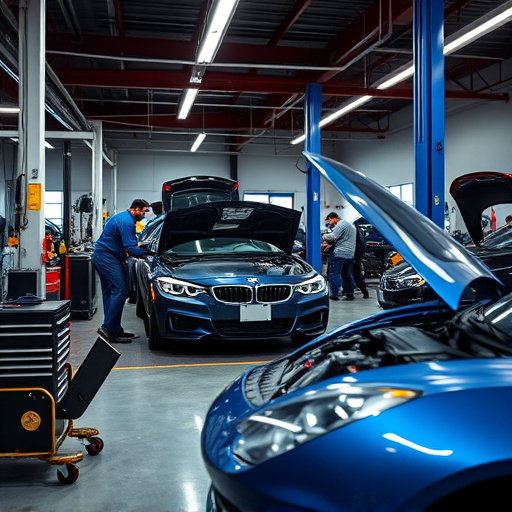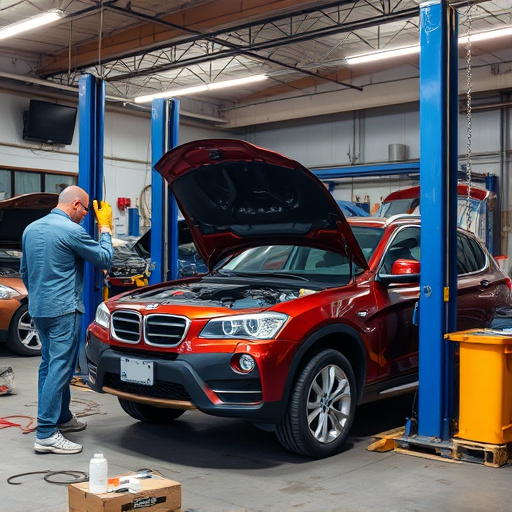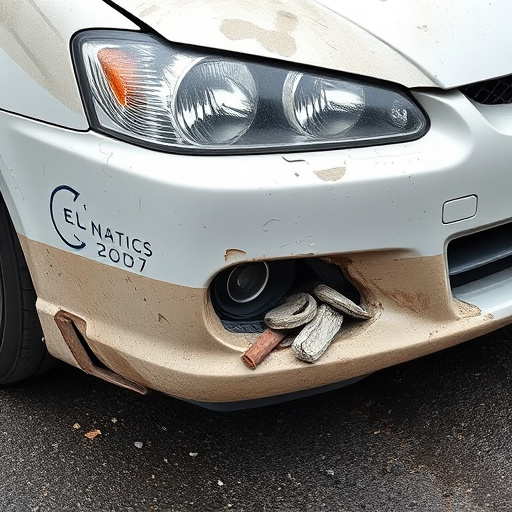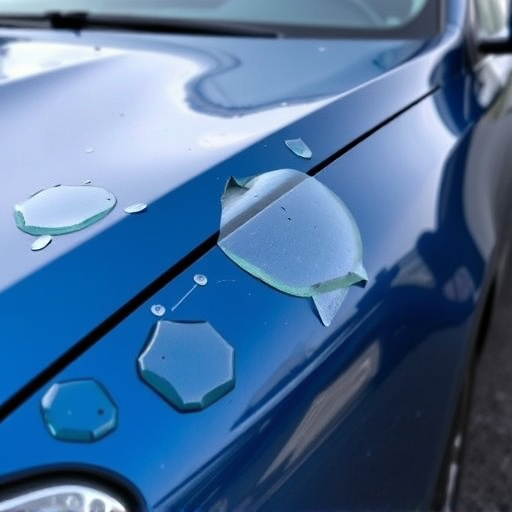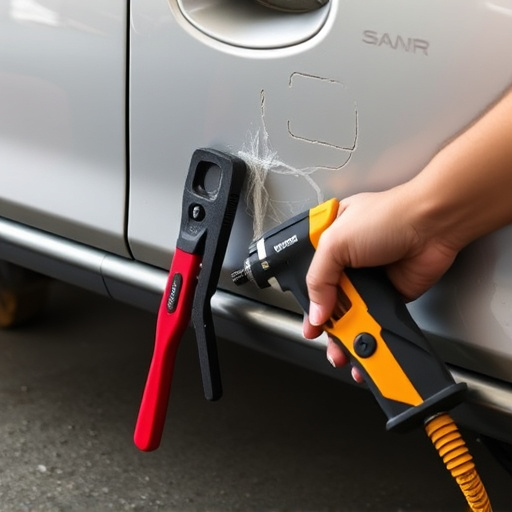Turnaround time in auto body collision centers is a critical metric for evaluating their performance and customer service. Faster turnaround times indicate efficient operations, skilled technicians, and advanced equipment, leading to quicker vehicle repairs. Longer times may signal staffing issues or complex damage. When prioritizing swift vehicle restoration, understanding the average turnaround times of potential collision centers is essential. Factors influencing repair speed include damage complexity, shop resources, part availability, technician skill, and organizational efficiency. To excel in this competitive market, collision centers should optimize their processes, employ best practices like advanced diagnostics and specialized technicians, and maintain well-stocked genuine parts to achieve faster turnaround times without compromising quality.
“Discover the secrets behind swift turnaround times at top-notch auto body collision centers. In today’s fast-paced world, getting your vehicle back quickly is a priority. This comprehensive guide unravels the factors influencing repair speed and offers best practices for collision centers to optimize their processes. From efficient workflow management to advanced technologies, learn how these strategies enhance customer satisfaction and ensure faster repairs without compromising quality. Get ready to navigate the path to quicker auto body collisions.”
- Understanding Turnaround Time at Auto Body Collision Centers
- Factors Affecting the Speed of Auto Body Repairs
- Optimizing Turnaround Times: Best Practices for Collision Centers
Understanding Turnaround Time at Auto Body Collision Centers
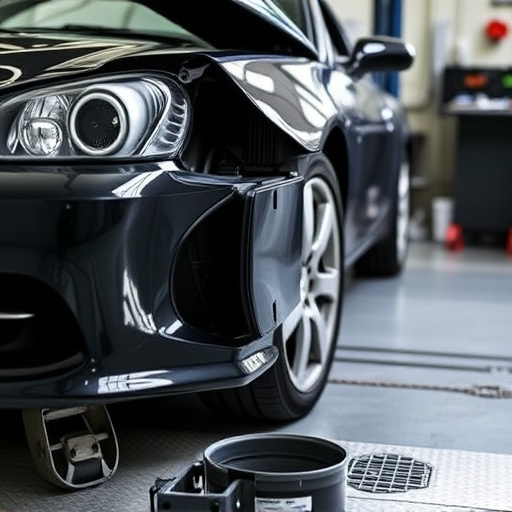
Understanding Turnaround Time at Auto Body Collision Centers
The turnaround time at an auto body collision center is a crucial factor for anyone who’s experienced a car accident. It refers to the speed at which the center can complete repairs on your vehicle, from the moment it’s brought in until it’s returned to you in its pre-accident condition. This metric is essential because it gives insight into the efficiency and capacity of the facility. A quick turnaround time suggests well-organized operations, skilled technicians, and a commitment to customer satisfaction.
On the other hand, longer turnaround times could indicate overcrowding, lack of specialized equipment, or insufficient staffing. Auto body collision centers that prioritize quick repairs often employ advanced techniques like structural repair and spot welding, which minimize the need for extensive panel replacement. Additionally, some centers might offer expedited services at an extra cost, ensuring your vehicle is ready within a shorter timeframe. When considering an auto body collision center, understanding their average turnaround time can significantly impact your decision, especially if you require your car back promptly.
Factors Affecting the Speed of Auto Body Repairs
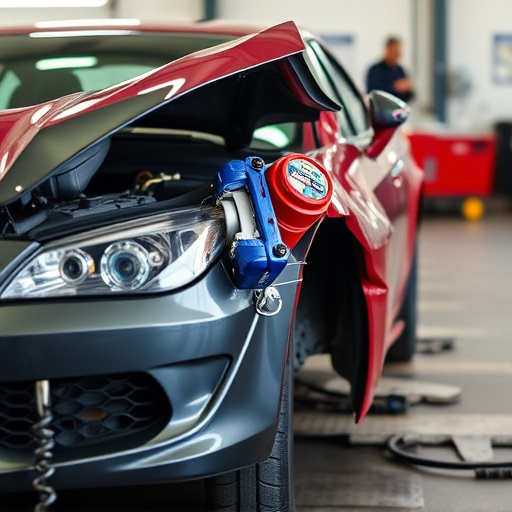
The speed at which an auto body collision center completes repairs is influenced by several factors. One key element is the complexity of the damage. Simple dents and scratches can often be fixed quickly, while more severe crashes involving structural damage may take significantly longer. The size and equipment of the shop also play a role; larger facilities with advanced technology are typically faster due to their capacity and specialized tools.
Another critical factor is the availability of parts. If the necessary auto body restoration parts are readily available, the repair process accelerates. Conversely, delays in obtaining specific components can slow down the entire job. Moreover, the skill and experience of the technicians greatly impact turnaround times; seasoned professionals can usually work more efficiently than beginners. Collision repair shops that prioritize organization, efficient workflows, and quality control also tend to deliver faster services while maintaining high standards.
Optimizing Turnaround Times: Best Practices for Collision Centers

Collision centers that aim to deliver top-notch service must optimize their turnaround times to meet customer expectations and stay competitive in the market. A key strategy involves implementing efficient processes throughout every stage of the repair journey, from initial assessment to final inspection. By streamlining these processes, auto body collision centers can significantly reduce overall repair duration without compromising quality.
Among best practices are utilizing advanced diagnostics for accurate damage estimation, prioritizing tasks based on severity and customer urgency, and ensuring a well-stocked inventory of genuine parts. Additionally, employing experienced technicians who specialize in frame straightening and auto body restoration techniques contributes to faster turnaround times while maintaining precision and structural integrity. Regular training sessions and staying updated with the latest industry standards further enhance productivity, ultimately benefiting both the center and its customers.
Auto body collision centers play a vital role in ensuring swift vehicle repairs, which is crucial for customers’ convenience and safety. By understanding the factors influencing turnaround time and implementing best practices, these centers can optimize their processes. Through efficient management of resources, effective communication with insurance providers, and prioritizing customer needs, auto body collision centers can significantly reduce repair durations, enhancing overall satisfaction for their clients.



